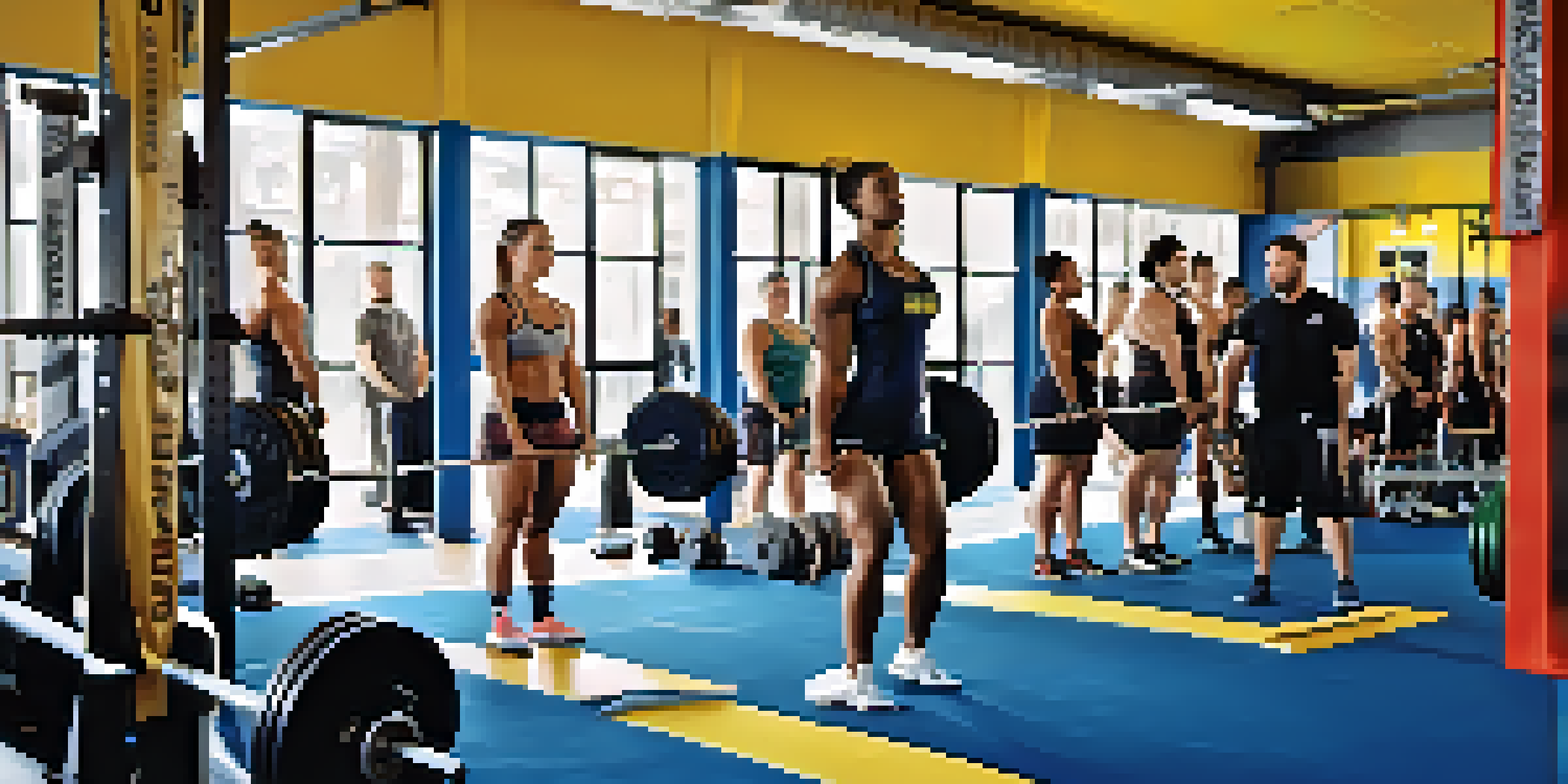Functional Strength: Why Powerlifting Should Be Your Focus

Understanding Functional Strength and Its Importance
Functional strength refers to the ability to perform everyday activities with ease. It encompasses movements that mimic real-life tasks, enhancing your overall physical capabilities. For instance, lifting heavy grocery bags or playing with your kids becomes much easier when you have a strong foundation.
Strength does not come from physical capacity. It comes from an indomitable will.
Unlike traditional bodybuilding, which often focuses on aesthetics, functional strength emphasizes practicality and efficiency. This means that the strength you build in the gym translates directly to your daily life. You’re not just lifting weights; you’re preparing your body for the activities you encounter every day.
Powerlifting, specifically, is an excellent way to develop functional strength. The three main lifts—squat, bench press, and deadlift—target multiple muscle groups, promoting balance and coordination. When you invest time in powerlifting, you’re not just lifting weights; you’re building a robust physique that can handle life’s demands.
Powerlifting Basics: What You Need to Know
Powerlifting consists of three primary lifts: the squat, bench press, and deadlift. Each of these lifts focuses on different muscle groups, providing a comprehensive workout that builds overall strength. Understanding the mechanics of these lifts is essential for maximizing your performance and safety.

For example, the squat targets your legs and core, while the bench press focuses on your upper body strength. The deadlift is a full-body movement that engages your back, legs, and core. By mastering these lifts, you’re not only improving your strength but also developing proper technique that can prevent injuries.
Functional Strength for Daily Life
Developing functional strength through powerlifting enhances your ability to perform everyday tasks with ease.
Beginner lifters often work with a coach or use instructional videos to learn these lifts correctly. Starting with lighter weights and focusing on form helps build a solid foundation. Remember, it’s about quality over quantity; proper execution will yield better results in the long run.
The Benefits of Powerlifting for Functional Strength
One of the standout benefits of powerlifting is its capacity to enhance functional strength. When you lift heavy, you engage multiple muscle groups simultaneously, which is akin to real-world movements. This means that the strength developed in the gym can seamlessly transfer to daily activities, making them feel easier.
The only bad workout is the one that didn't happen.
Moreover, powerlifting improves bone density, which is crucial as we age. Strong bones help prevent injuries from falls and other accidents. In a way, powerlifting acts as a safeguard for your health, ensuring that you stay active and independent as you get older.
Additionally, powerlifting encourages mental toughness and discipline. The commitment required to lift heavier weights can translate into other areas of life, fostering a mindset of perseverance and resilience. Overcoming challenges in the gym empowers you to tackle obstacles outside of it.
Powerlifting vs. Traditional Weightlifting
While both powerlifting and traditional weightlifting involve lifting weights, their goals differ significantly. Traditional weightlifting often emphasizes muscle hypertrophy, or growth, while powerlifting aims to increase strength in specific lifts. This distinction is crucial when deciding which approach aligns with your fitness goals.
In traditional weightlifting, you might focus on a variety of exercises targeting different muscle groups. However, powerlifting hones in on the squat, bench press, and deadlift, allowing for greater specialization. This specialization can lead to more significant strength gains in the long run.
Powerlifting vs. Traditional Lifting
Powerlifting focuses on building strength in specific lifts, while traditional weightlifting emphasizes muscle growth.
Another difference lies in training intensity and volume. Powerlifting routines typically include fewer repetitions with heavier weights, while traditional weightlifting may involve higher repetitions with lighter weights. Choosing the right approach depends on whether you prioritize functional strength or aesthetic goals.
How Powerlifting Improves Everyday Life
Engaging in powerlifting can make everyday tasks feel lighter and more manageable. Imagine carrying heavy boxes during a move or lifting your child with ease; powerlifting equips you with the strength to handle these situations effortlessly. The real-world applications of the strength gained in the gym are vast.
Moreover, powerlifting fosters better posture and core stability. As you strengthen your core and back through squats and deadlifts, you naturally improve your posture. This can lead to reduced back pain and discomfort, enhancing your overall quality of life.
Additionally, the confidence gained from achieving personal lifting goals can positively influence other areas of your life. As you witness your progress in the gym, you may find yourself more motivated in your career and personal endeavors, creating a ripple effect of empowerment.
The Importance of Proper Nutrition for Powerlifting
To maximize your powerlifting potential, proper nutrition is paramount. Fueling your body with the right nutrients supports performance and recovery. Think of your body as a high-performance vehicle; it needs quality fuel to operate at its best.
A balanced diet rich in proteins, carbohydrates, and healthy fats is essential for strength training. Proteins help repair and build muscle, while carbohydrates provide the energy necessary for intense workouts. Incorporating nutrient-dense foods will ensure you have the energy to power through your training sessions.
Nutrition's Role in Powerlifting
Proper nutrition is essential for optimizing performance and recovery in powerlifting, fueling your body like a high-performance vehicle.
Hydration is also a key factor in performance and recovery. Staying adequately hydrated helps prevent fatigue and cramping during lifts. Remember, you can’t outlift a poor diet; paying attention to your nutrition will enhance your powerlifting journey significantly.
Getting Started with Powerlifting: Tips for Beginners
If you’re new to powerlifting, starting can feel daunting, but it doesn’t have to be! First, focus on learning the correct form for each lift. Consider working with a coach or joining a powerlifting club, where you can receive guidance and support from experienced lifters.
Next, set realistic goals for yourself. Rather than aiming for lofty targets right away, consider small, attainable milestones. Celebrating these victories will keep you motivated and committed to your training.

Lastly, embrace the community aspect of powerlifting. Engaging with fellow lifters can provide encouragement and accountability. Sharing your journey with others makes the process not only enjoyable but also rewarding.